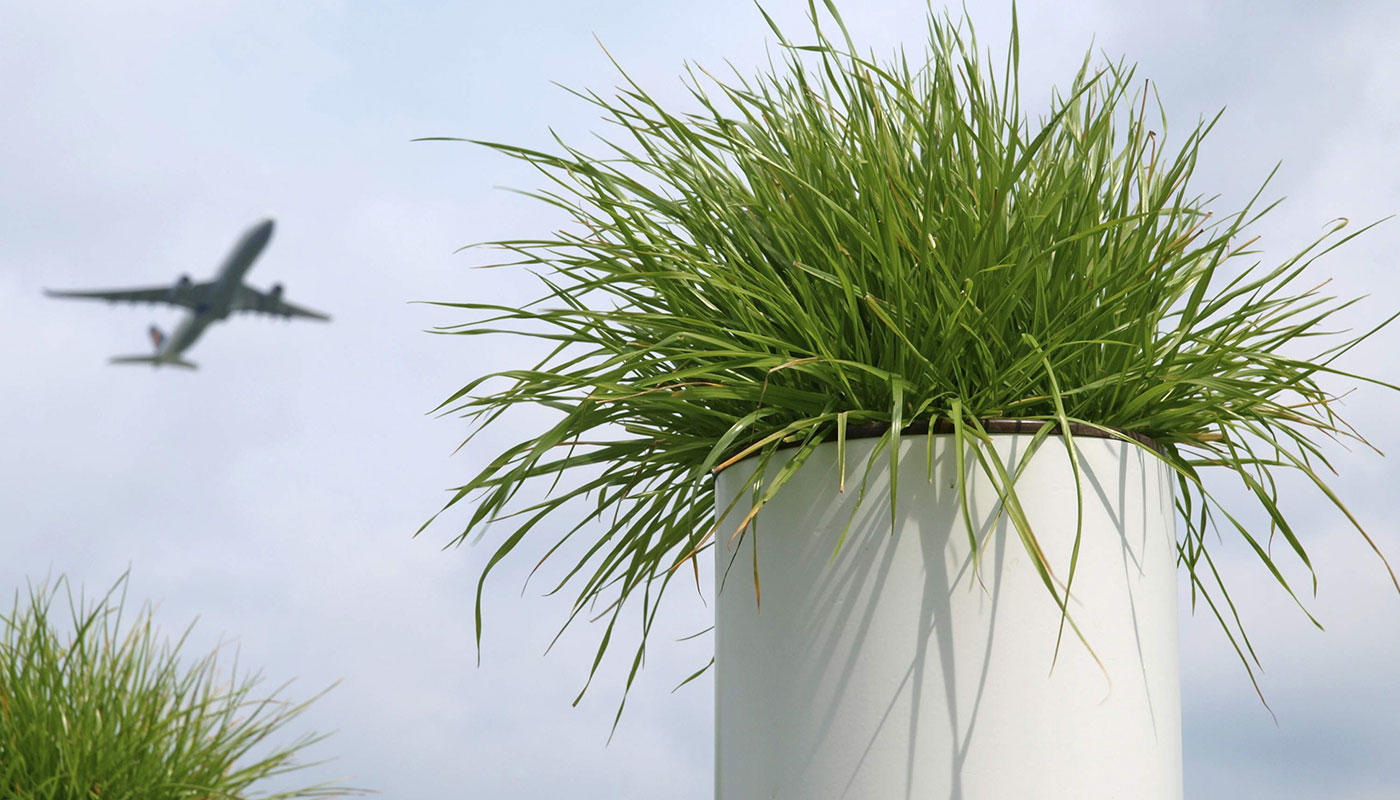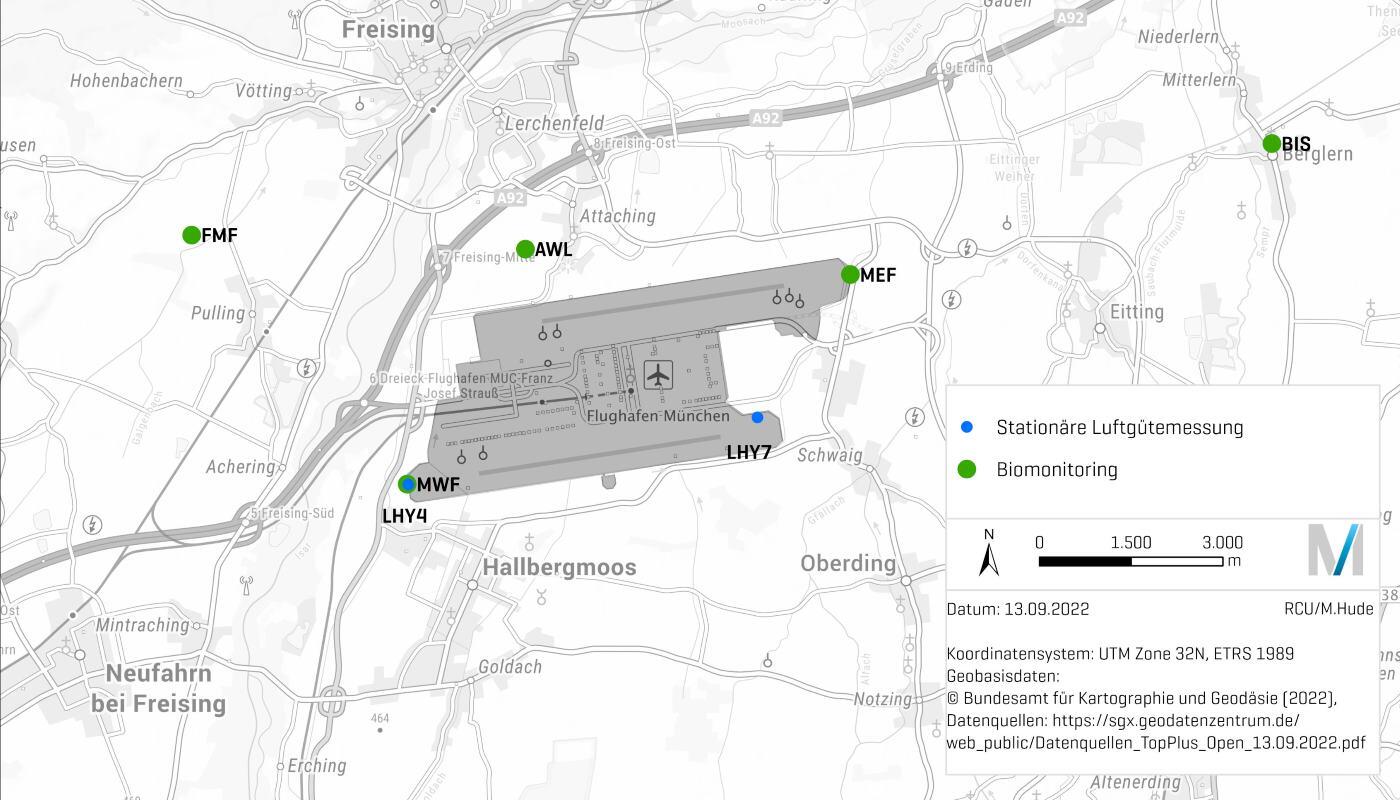Emissions of pollutants can spread in the environment, get into various environmental media (such as the air, soil, water) and accumulate there. Living organisms have long been used to monitor the environment. The biomonitoring program at the Airport uses cultivated plants for monitoring – supplemented by Bergerhoff collectors.
During »active« biomonitoring, plants are propagated under the same conditions, exposed to the area near to the Airport, and then examined in the laboratory for pollutants after a specified period. The comparison of results of plant analyses with statutory thresholds and maximum readings for animal feed and food enables conclusions to be drawn about the quality of the food produced in the region.
The results of dust precipitation measurements in turn produce indications of a change in soil quality. The statutory test values and thresholds for soil protection are used as a reference here. The comparison of individual control points then shows the influence of airport operations on the environmental quality.




